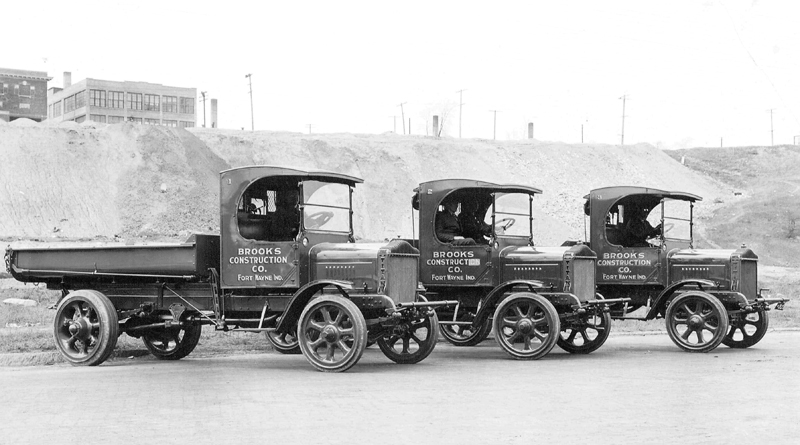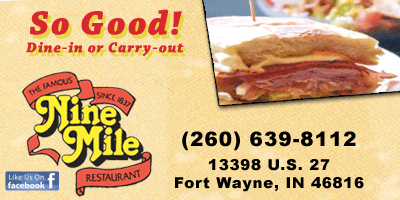The Founding Of Our Community

In the early 1870s the railroad spur at the Lower Huntington Road intersection created a minor land boom. Pioneer landowners such as the Masons, Bradburys and Weavers, sold lots to people wanting to move to the suburbs out of the busy Fort Wayne area. In 1905, with the help of the interurban having stops at both ends of Lewisburg Road (Ideal Avenue), a community evolved.
The original plat of Waynedale dates to December 4, 1821, when Sophia Henderson deposited in the land office a registration certificate. No town was built initially, and throughout the years the land changed hands many times. James Cunnison purchased the acreage on April 1, 1882.
The first town to be platted in Wayne Township outside of Fort Wayne’s city limits was Lewisburg. Waynedale was platted several years later and was located near the original Lewisburg plat. The Lewisburg plat was entered by Lewis Mason on June 3, 1837, and contained 48 lots with 6 streets named First, Second, Third, Jefferson, Main and Marshall. It was situated west of the present village of Waynedale. The Lewisburg Road, connecting Lower Huntington Road and State Road 3, was named for this proposed town, which never materialized.
On February 15, 1921, the land was sold to Abner Elzey. The only residence in the original plat was the Cunnison farmhouse, the site that was occupied by Umber’s Hardware. The original bounds of Waynedale were McArthur Drive on the south, Old Trail Road on the east, Lower Huntington Road on the north and Beaty Avenue on the west.
Waynedale represented the dream of Elzey for a community in which anyone could build a home to his own design and enjoy suburban life. This unincorporated town of approximately 3,000 residents was situated about three miles southwest of Fort Wayne on State Roads 1 & 3, and was founded by Elzey on February 15, 1921. On a cold December day in 1920, while standing on the southeast corner of the Lower Huntington Road and the present Old Trail Road, Elzey pointed to the southwest toward the Cunnison farmland and proclaimed it an ideal location for a community. The town built on the location and its surrounding area stands as a memorial to its founder. Naming the community was difficult. At first, Elzey had intended to name the community after his only daughter, Ilo, but this idea was dropped. And since those living in this area spoke of Fort Wayne as “Wayne,” he chose that as part of the name, using the name of his son Dale as the other.
There had been earlier attempts to define the community. In 1905, Henry E. Metting, who had opened the area’s first department store (Waynedale Department Store), applied for a post office under the heading of Lewisburg. This post office would be placed at the site of Noble’s Home Store, where a public library had already been established. An existing southern Indiana town already had the name Lewisburg, so Metting reapplied with the name of Bingville. That too was ruled out in favor of the name Mason to match the rail spur to that area. The attempt to create a post office at the Mason rail spur was halted, however, when Abner Elzey decided to lay out lots around what is now the intersection of Old Trail and Lower Huntington Roads.
On June 30, 1924 Abner Elzey platted out 110 acres of the Mason real estate for lots and streets.
Early in 1957 the move to annex Waynedale, in the talking stages for some years, took a positive turn. On June 25th, 1957, the Fort Wayne City Council voted unanimously in favor of the annexation ordinance. The measure meant the taking of 5.27 square miles of the southwest area and the boosting of the City population by nearly 6,000 persons. There was just one dissenting note at the council session. Charles Churchward, who said he was a friend of the late Abner Elzey, founder of the Waynedale community, told the councilman, “I don’t see this council has done anything to be proud of.” Churchward said, “it was Elzey’s dream that the community eventually be incorporated.” He charged that proponents of the annexation plan were “newcomers to Waynedale who have had practically nothing to do with making a town out of it.”
The Waynedale Civic Association, headed by Max Farrell, had opposed the annexation for more than a year during the study stage. Farrell was instrumental in having a poll conducted among Waynedale residents in early 1957 on the questions of town incorporation or annexation to Fort Wayne. Farrell’s group indicated they would be guided by the decision of the majority of voters.
Results of the poll announced in February showed 723 in favor of annexation and 633 in favor of incorporation.
- What To Know About Mosquito Season - July 19, 2024
- Local Worship & Events: July 19 Update - July 19, 2024
- Allen County Bar Foundation Announces Scholarship Winners - July 19, 2024


